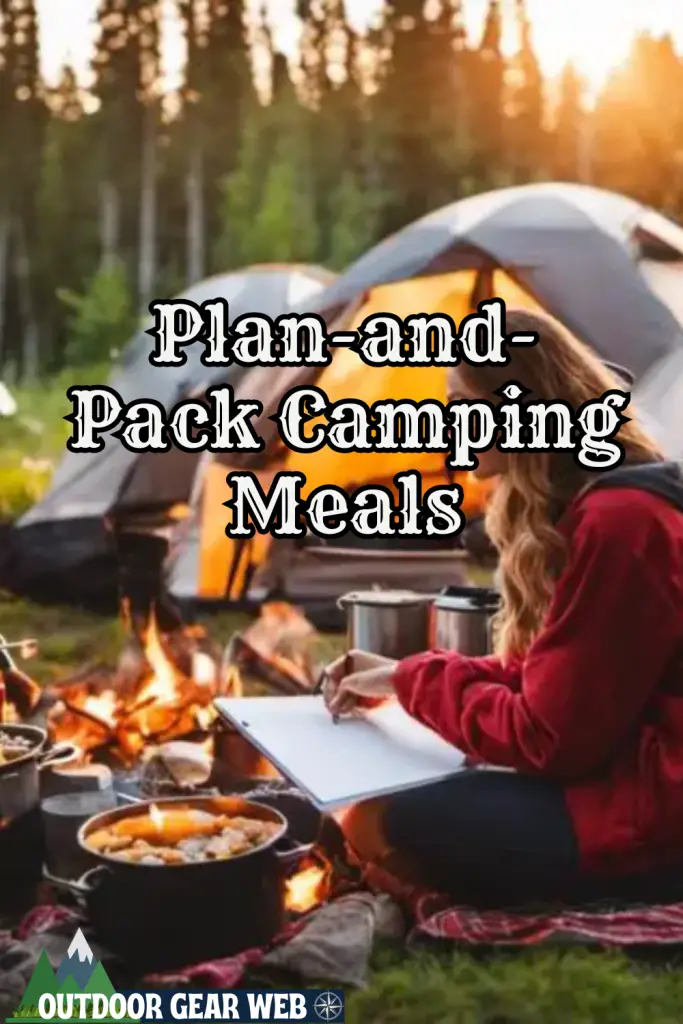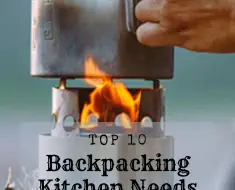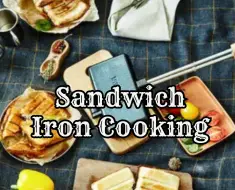
Heading outdoors for an adventure doesn’t mean you have to leave your taste buds behind. Camping allows you to reconnect with nature and it also presents the opportunity to savor some delicious meals under the stars. Planning and preparing your camping food can be as much fun as the trip itself, all it requires is a bit of forethought and creativity. This helps in creating a meal plan that not only satisfies your food preferences and dietary needs but also aligns with the length of your camping trip and the available cooking resources. Furthermore, understanding how to properly store and transport your glorious make-ahead camping meals ensures that they stay fresh and safe to eat. So let’s take a look at these tips that should help you plan-and-pack your next camping meals.
Stumped on what to eat while camping? Check out our recipes!
Meal Plan-and-Prep
Developing a Camping Meal Plan
Developing a comprehensive meal plan is crucial for a successful camping trip. It begins with figuring out individual dietary requirements and preferences of those on the trip. Do take into account allergies, preferred cuisines, and specific dietary needs such as vegetarian, vegan, gluten-free, or low-sugar diets. The length of your camping trip is also a vital factor. Be sure to consider the number of days you’ll be camping and plan meals enough for breakfast, lunch, dinner, and snacks for each day.

Making Meal Prep Easier Before Camping
Preparation is key to a hassle-free camping trip. Before leaving, chop vegetables, marinate meats, and cook any meals that you can freeze and reheat on-site. Use resealable bags or containers to avoid leakage and save space in your camping cooler. Don’t forget to label each meal with the cooking instructions if required.
Prepare Foods That Require Minimal On-Site Cooking
Choose meals that require minimal cooking on-site for a hassle-free experience. Consider options like pre-made sandwich fillings, salads, or tortilla roll-ups. Also, pulled pork or chicken can be cooked beforehand and used in sandwiches, on potatoes, or with salad. Pasta salads are another good option as you can eat them cold or easily warm them up. You could also bake casseroles or lasagnas ahead and simply reheat them at the campsite.
Plan-and-Pack Campfire Friendly Meals
Don’t limit your campfire friendly meals to hot dogs and burgers. Consider meals like foil packet fajitas, where you chop all the ingredients at home, wrap them in foil, and cook over the campfire. Other good options can be pre-made skewers or stuffed bell peppers. For breakfast, consider making egg and sausage burritos ahead of time and simply reheating them over the fire in the morning.
Camping Snacks Ideas
Don’t forget the importance of snacks during your camping trip. Items like granola bars, trail mix, fruit leather, and beef jerky are great choices. Consider prepping veggies and hummus, or other dips, for a healthy and satisfying snack.
By planning and prepping ahead, you can reduce the stress of meal planning during your camping adventure and spend more time enjoying nature.
Check out these other practical camping tips.
Plan-and-Pack Safe Food Storage & Transportation
Understanding Meal Storage and Transportation for Camping
The process of storing and transporting pre-made meals for camping is crucial to maintaining their freshness, taste, and nutritional value. Begin by individually packing each meal in airtight containers or heavy-duty freezer bags to protect them from air exposure and potential damage during transport. Always pack heavier items at the bottom of the cooler and lighter ones on top to prevent crushing.
For longer-lasting meals, opt for vacuum sealing your food. This not only preserves the flavor and texture of the food but also drastically reduces the amount of space needed for storage. Label each package with the contents and the date it was packed to keep track of freshness.
Choosing the Right Foods for Camping
The best camping foods are those that are lightweight, non-perishable, and easy to prepare. Pre-cooked pasta, rice, and beans make excellent base ingredients for camping meals. They can be easily reheated over a campfire or camping stove, while fresh fruits and vegetables can add nutritional value and variety.
Canned goods, such as fish, chicken, and vegetables, are also good camping foods. They are simple to transport, nutritious, and require no refrigeration, making them perfect for trips. Don’t forget about high-energy snacks like trail mix, granola bars, and nut butter, which are ideal for treks and moments when you need an energy boost.
How to Pack Meals to Prevent Spoilage
To prevent spoilage, pack perishable items like dairy products, meats, and eggs at the bottom of your cooler, directly on top of ice or cool packs. Keep the cooler in the coolest part of your vehicle while traveling (not the trunk), and minimize the number of times you open it to maintain a low temperature. Packing perishable items close together will help them stay colder longer.
Slabs of frozen water or ice packs should be used as a buffer between fresh food items. Another pro tip is to freeze certain meals or ingredients before the trip. They will slowly thaw in the cooler, staying fresh longer.

Importance of A Cooler or Other Cooling Device
Investing in a high-quality cooler is essential for camping trips. Coolers maintain a consistently cold temperature to inhibit bacterial growth, keeping your meals fresh and safe to eat. They can also double as extra seating or table space at your campsite.
For longer trips, consider a multipurpose cooling device like a car fridge or a portable electric cooler. These ensure your foods stay chilled throughout extended periods, significantly reducing the risk of foodborne illnesses.
Take your new found plan-and-pack skills on an affordable fall getaway.
Plan-and-Pack Recipe Collection and Adaptation
Collecting Recipes for Camping
To begin with, you will need a variety of simple, make-ahead camping recipes. Research online or in cookbooks for camping-friendly dishes and make a list of what catches your eye. Consider covering all meals of the day – breakfast, lunch, dinner, and snacks. Keep in mind the facilities you’ll have on your camping trip. For example, if you won’t have access to a refrigerator, focus on recipes that don’t require refrigeration.
Choosing Breakfast Options
For breakfast, consider recipes like overnight oats or granola bars, which can be made in advance and require no cooking. Quiche muffins are also a good choice since they can be eaten hot or cold. Pre-cook your breakfast meals, freeze them if necessary, and use your camping cooler to transport them to your camping site.
Plan-and-Pack Lunches
Lunches should be light, power-packed, and easy to carry. Examples of good lunch options are wraps or sandwiches that don’t require refrigeration. Peanut butter and jelly, tuna, or chicken salad can be mixed in advance and kept cool. Alternatively, you can pre-cook pasta or rice salads and keep them chilled until ready to eat.

Preparing Your Dinners
For dinners, you can prep and portion out dry ingredients for meals like chili, rice, or pasta dishes. To prepare these meals, all you’ll need to do on site is add water and heat them up. If you have access to a grill, pre-marinate meats in a zip-lock bag so they’re ready to cook when dinner time rolls around.
Plan-and-Pack Snacks
Snacks, on the other hand, should be easy to carry around and quick to eat. Popcorn, trail mix, nuts, and dried fruit are perfect no-cook solutions. For a more substantial option, consider packing cheese and crackers or portable fruits like apples or bananas.
Adapting Favorite Recipes
While camping, you may be limited by the appliances and space you have on hand. But that doesn’t mean you can’t enjoy your favorite meals. Think about how you might be able to adapt them for simpler preparation and cooking. For example, instead of a chicken stir-fry that requires several pots and pans, try making a foil packet version that you can cook over a campfire.
With a little bit of plan-and-pack, and a collection of versatile recipes, you can easily enjoy delicious, homemade meals on your next camping trip.
Keep your kids engaged in the camping lifestyle with these kid’s camping gifts.
Plan-and-Pack Cooking Methods & Tools
Open Fire Cooking in Camping
To cook on an open fire while camping, you will first need to establish a safe and controlled campfire. This can be done by clearing a small space on the ground free of any flammable materials. Establish a pit using rocks or established metal fire rings available at many campgrounds. Once your fire is established, let it burn down to coals as this will provide the most even, controllable heat.
You can cook directly on the coals using “caveman style” where you place your food (usually wrapped in foil) directly onto the coals. Skewers are another tool often used for open fire cooking, ideal for roasting veggies or meats. If you wish to use a pot or pan, suspend it over the fire using a tripod or place it on a grill grate set over the coals.

Portable Stove Cooking for Camping
Portable camp stoves are a convenient and controllable way to cook while camping. These stoves typically use a fuel such as propane or butane. The heat output can be regulated offering more control than an open fire. It’s as simple as placing your pot or pan on the stove and adjusting the heat as necessary.
Keep in mind, you need to bring along sufficient fuel for your camping duration. Also, be aware of any potential fire restrictions or bans that might affect the use of portable stoves.
Essential Camping Cooking Tools
Regardless of your preferred cooking method, there are some tools you should always have on hand when camping. A good camping knife is essential for food preparation. You should also make sure to have a reliable pot and/or pan, as well as cooking utensils like a spatula or cooking spoon.
A long pair of tongs can be very helpful, especially when cooking on an open fire. Also, always carry cleaning supplies to clean your utensils such as a sponge, dish soap and a small tub or collapsible sink. Remember, it’s essential to maintain cleanliness and hygiene even when in the great outdoors.
Camping No-Cook Meals
Planning no-cook meals can be incredibly helpful for those days when you’ve been active and just want something quick and easy. This could mean packing pre-made salads or sandwiches, or bringing ingredients like canned tuna or chicken, bread, cheese, and raw vegetables which require no cooking.
If you are backpacking you should read more about our dehydrated food recommendations.
Final Thoughts on Plan-and-Pack Camping Meals
As we wrap up, it’s evident that the beauty of camping food lies in its simplicity. Mastering a variety of easy, make-ahead camping recipes that cater to all meals of the day makes this outdoor activity even more enjoyable. Also, successfully adapting your favorite recipes into camping-friendly versions opens up a world of culinary possibilities. The knowledge of plan-and-pack cooking methods such as open fire cooking and portable stove cooking, combined with the essential tools, empowers you to prepare appetizing meals at the campsite effortlessly. When you embark on your next camping journey, remember that the preparation and enjoying of your meals is a significant part of the experience – made even more rewarding with the right strategies in place.
















